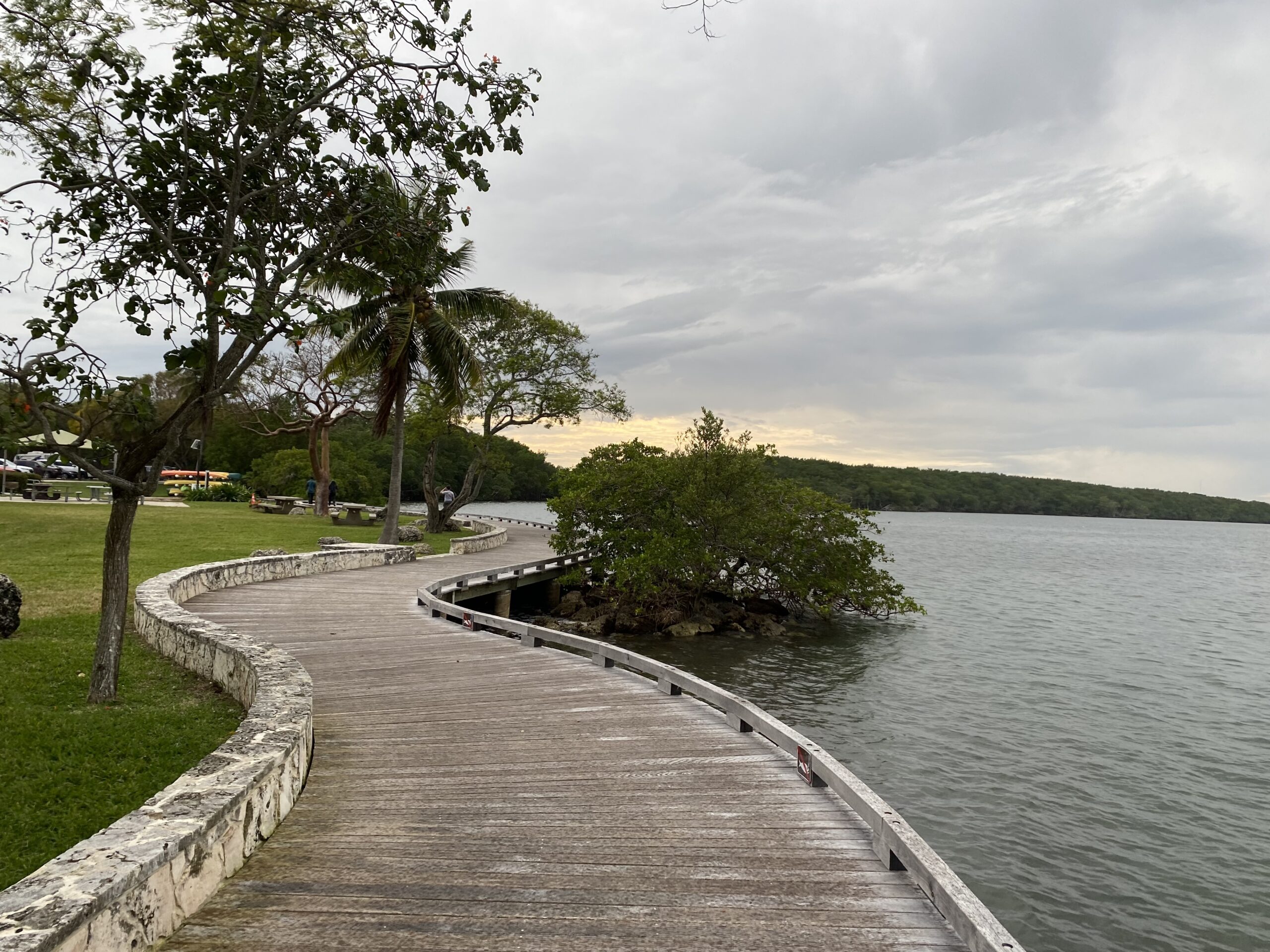Years ago, Mrs. 123 and I fell in love with snorkeling. It’s a wonderful way to see marine life below the surface of the water without the commitment of scuba diving. We have multiple snorkeling outings planned for our trip, the first of which was in Biscayne National Park. The park, just south of Miami, is 95% water. The only real way to experience it is to get on a boat of some sort.
The park has great opportunities for kayaking and canoeing through the mangroves, paddle boarding in lagoons, and snorkeling in varied conditions,

We drove out from the Everglades on a day trip, made a reservation for an afternoon snorkel, then set off to buy snorkeling gear. We had looked in St. Augustine and Cape Canaveral, finding only budget snorkeling sets. We didn’t need high end gear, but we wanted masks and snorkels that wouldn’t leak, fins that didn’t pinch or tear. We found a dive shop in Miami about a half hour away and got appropriately outfitted.
The snorkel tour had about a dozen people aboard a sort of pontoon boat, piloted by Captain Mo, accompanied by a first mate/naturalist.
Biscayne was named a national monument by President Lyndon Johnson in 1968, and became a full-fledged national park in 1981. That helped protect the marine life, especially the corals, allowing for fish, birds and other sea animals to thrive again.
Our tour took us past Elliott Key to a coral reef, where fish seemed nonplussed about our presence. We saw a ray of some sort submerged in the sand on the ocean floor.
After a half hour of snorkeling, we moved to a shipwreck. The Alicia, made of wood and steel, had run aground in the shallow waters in 1905. What wood wasn’t claimed by wreckers working the coast disintegrated into the sea, leaving only the steel skeletal remains of the ship.
The highlight of the wreck was a bright green eel that poked its head out of the wreckage, showcasing its impressive teeth.
As we climbed back into the boat to head for a final snorkeling spot, the dark clouds overhead began pelting us with rain. We huddled behind whatever cover we could find, a towel, a jacket, a water cooler, to survive the cold, wet, windy ride.

Along the way, the rain relented and Captain Mo slowed the boat to ask if we were frozen and whether we still wanted to do more snorkeling. I seemed to be the only one still interested. The water was warmer than the outdoor air, and we were supposed to snorkel next among the mangroves.
But the rest of the boat mutinied on me and we stopped off at Adams Key to warm up. The key had belonged to a series of rich and famous people before being acquired by the National Park Service. A couple of park rangers live on the island full time. Our stop was brief and we soon returned to the visitor center.
The park also has a half mile trail that jets out into the water, providing close up views of birds and whatever other marine life pops out of the water. But it began raining again, so we hightailed it for the car.


